While it’s probably premature to say that the team’s ’18/19 showing definitively answered all those questions, they’re at least much less pressing heading into the 2019 offseason. Pierce had a solid first year as the young, run-and-gun Hawks began to form their own identity. And Atlanta didn’t miss Schroder as Young gave Doncic a serious run for Rookie of the Year honors.
There’s still a long way to go in the rebuild, but the Hawks certainly seem pointed in the right direction. Now, they have the opportunity to take another step or two toward contention with this offseason’s moves.
Does that mean that Atlanta recognizes it won’t get an audience with those top-tier players? Or does Schlenk simply believe it’s too early in the rebuilding process to attempt that sort of splash? Either way, at this point, it would be surprising if the Hawks pursue a star free agent, and even more surprising if they land one.
2. Will the Hawks focus on productive veterans or salary dumps on the trade market?
During the 2017 offseason, the Hawks took on Jamal Crawford‘s unfavorable contract from the Clippers because it was attached to a first-round pick, then immediately waived Crawford. In the 2018 offseason, they made a similar deal with the Thunder, acquiring Carmelo Anthony‘s pricey expiring contract along with a future first-round pick before cutting Anthony.
With over $40MM+ in projected cap room this summer, the Hawks could easily accommodate a similar salary dump — or even two of them. But the club doesn’t necessarily have to go in that direction.
The Hawks already control extra first-round picks in 2019, 2020, and 2022, so at some point they may want to consolidate their assets and make a run at a star player in a trade. It may be too soon to take a swing like that, especially for a player who isn’t on a long-term contract. For instance, Atlanta could, in theory, put together a pretty intriguing package for Anthony Davis, but it wouldn’t make sense to do so if he’ll likely leave in a year.
Even if the Hawks don’t want to part with any of their first-round picks in a trade for a veteran, their cap room could be a useful tool in trade talks. If there’s a team out there looking to move a useful player in order to open up more space – say, the Clippers with Danilo Gallinari – Atlanta’s cap space could provide the means to accommodate that sort of deal without parting with any major assets.
3. Will the Hawks waive-and-stretch Miles Plumlee?
Plumlee, who has spent the last two seasons in Atlanta, appeared in just 18 games and played 173 total minutes in 2018/19. He’s entering the final year of his contract and is owed $12.5MM in 2019/20. Theoretically, the Hawks could create nearly $8MM in additional cap room by waiving him and stretching his salary over three seasons.
In reality though, I doubt we see that move. Plumlee would be an ideal stretch candidate on another roster, but it’s hard to imagine why the Hawks would need to move from $41MM in cap room to $49MM. And stretching Plumlee would add $4MM+ cap hits to Atlanta’s books for the following two seasons, when that cap space might be even more useful.
That’s not to say that Plumlee will be a Hawk to start the 2019/20 season, or that the team won’t waive him. But trading the big man’s expiring contract for a longer-term deal in order to pick up an extra asset seems like a more Schlenk-esque move than simply waiving and stretching him.
 4. Will the Hawks extend Taurean Prince?
4. Will the Hawks extend Taurean Prince?
Prince was drafted a year before the Hawks’ current management group assumed control of the front office, and his name has intermittently popped up in trade rumors, which may be an indication that he’s not viewed as a lock to be a long-term building block.
Still, the former Baylor standout has developed into an increasingly reliable three-and-D wing, making 38.7% of his three-point attempts over the last two seasons. His perimeter defense may not be as strong as the Hawks might like, but Prince looks like the sort of contributor who could have a real role on a playoff team.
Schlenk has said he plans to talk to Prince’s agent this offseason about a potential extension – he’ll be eligible for one starting in July, up until opening night – so it will be interesting to see if the two sides can reach an agreement.
Of the players who have signed rookie scale extensions signed in recent years, Justise Winslow (three years, $39MM) and T.J. Warren (four years, $47MM) may be the best comparables for Prince. Neither player has exactly the same skill set, but if Prince gets a long-term deal from the Hawks, an annual salary in that neighborhood seems about right to me.
5. What will the Hawks do with their draft picks?
This question can only really be answered once we know the answer to another one: How many picks will Atlanta actually have, and where will those picks land? Next Tuesday’s lottery is a huge one for the Hawks, whose best-case scenario could have them picking first and ninth overall, thanks to a trade with Dallas. The worst-case scenario? The Mavs keep their pick and Atlanta’s first-rounder slips all the way to No. 9.
If we assume the lottery plays out in a relatively straightforward manner, the Hawks should own a pair of picks in the back half of the top 10, plus three more selections in the first half of the second round (Nos. 35, 41, and 44). That’s too many picks to use them all on immediate contributors.
There are a ton of scenarios in play for Schlenk and the Hawks with those picks. Packaging multiple picks to move up could be an option if there’s a player they really have their eye on. Selecting a draft-and-stash prospect is another option. So is trading a pick or two for future selections, ensuring that they stay well-stocked with draft assets going forward.
The Hawks may wait to see how the draft plays out before making any final decisions on their picks, but it’s reasonable to expect them to be one of the league’s active teams on June 20.
Check out the Atlanta Hawks’ offseason salary cap outlook right here.
Salary information from Basketball Insiders was used in the creation of this post. Photos courtesy of USA Today Sports Images.
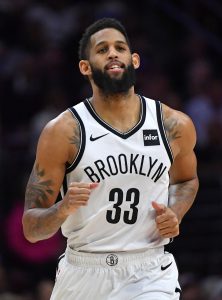 Guaranteed Salary
Guaranteed Salary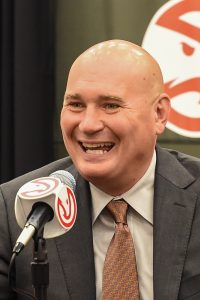 1. How aggressive will the Hawks be in free agency?
1. How aggressive will the Hawks be in free agency? 4. Will the Hawks extend
4. Will the Hawks extend  Guaranteed Salary
Guaranteed Salary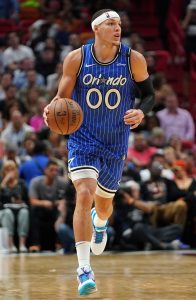 Guaranteed Salary
Guaranteed Salary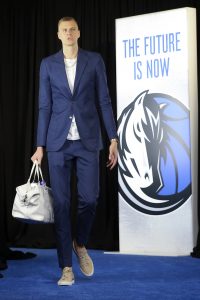
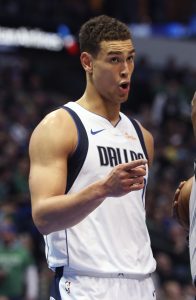
 Guaranteed Salary
Guaranteed Salary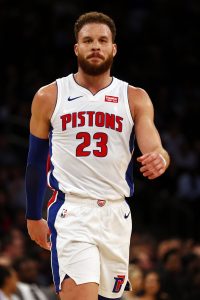 Guaranteed Salary
Guaranteed Salary